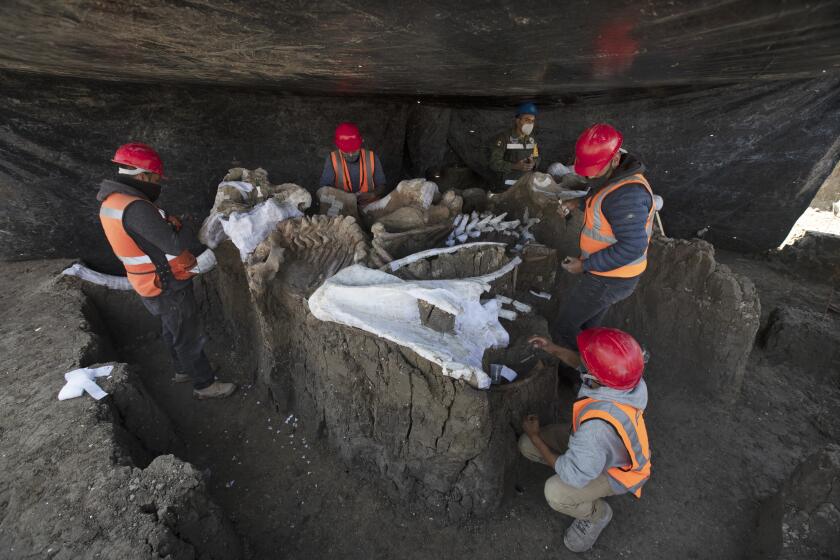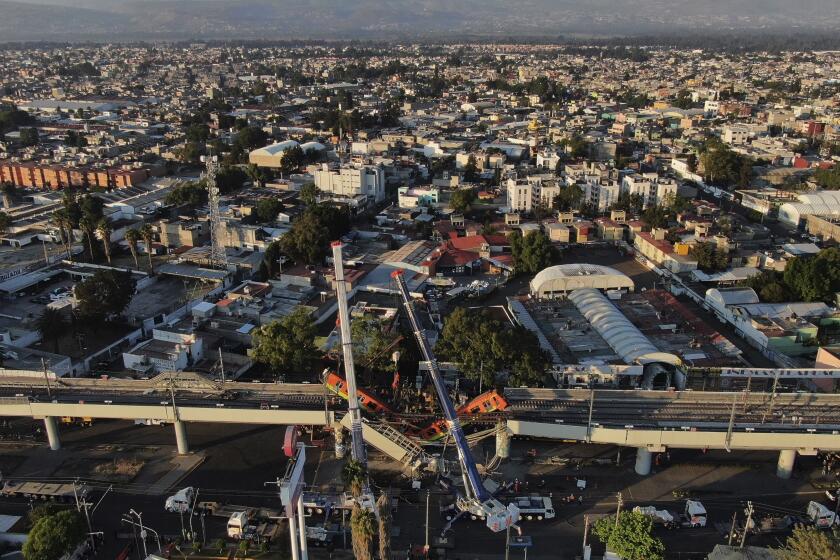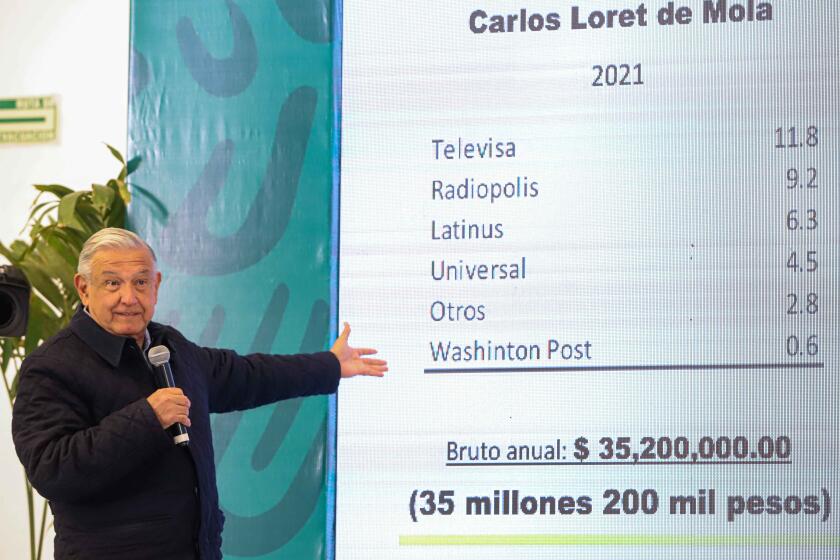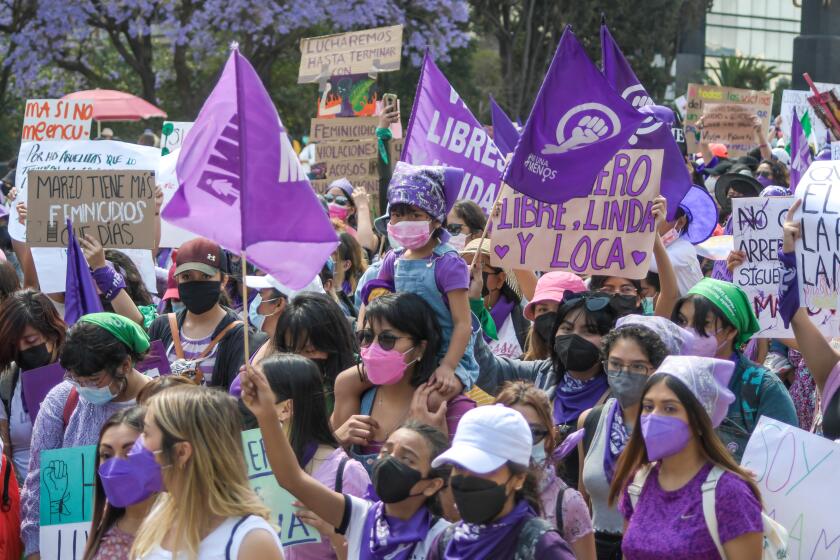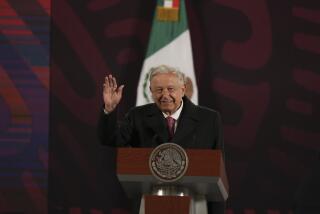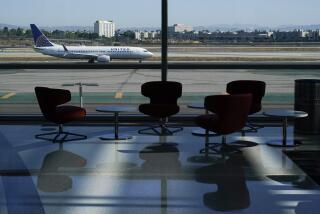Mexico City gets a new airport today. But is anyone going to use it?
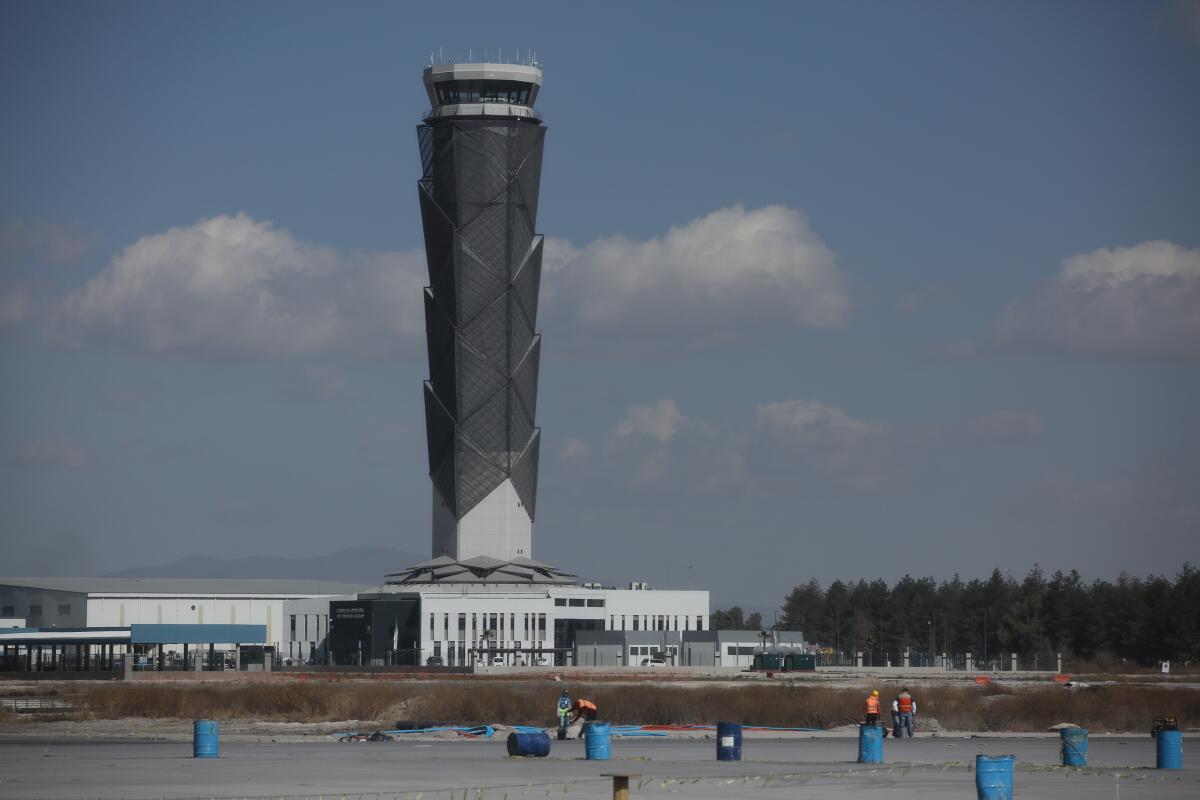
MEXICO CITY — Mexican President Andrés Manuel López Obrador inaugurated a new Mexico City airport Monday, one of his four hallmark building projects.
The government pulled out all the fanfare it could muster, including releasing a documentary on the project showing an army general talking to a statue.
The terminal was built by the army, on an army airbase, and named after an army general.
But the new terminal will handle only about 16 flights per day, in part because it is so far from the city and rail links and expressways have yet to be completed. On Monday only about 2,000 passengers used the new terminal, a far cry from the 2.4 million the government hopes to attract by the end of the year.
Only one “international” flight will use the airport, a flight to Caracas, Venezuela, operated by a Venezuelan carrier that is under U.S. sanctions.
López Obrador conceded that new terminal is more popular among cargo flights than passenger jets.
“It is just a question of the airlines increasing their flights,” the president said. “In the case of cargo traffic there has been more progress, the [old] Mexico City airport is saturated in cargo, as well.”
The new Felipe Angeles Mexico City airport reflects the contrasts and contradictions of López Obrador’s administration.
The number of mammoth skeletons recovered at an airport construction site north of Mexico City has risen to 200, with more discoveries expected.
There is government austerity — his main campaign promise is fully on display in the rather bare-bones terminal — as well as his customary outsized reliance on the Mexican army.
A documentary on the building of the terminal features an army general speaking to and saluting a huge statue of Gen. Felipe Angeles, who fought alongside Pancho Villa in Mexico’s 1910-1917 Revolution and was later executed.
But there are also widely ridiculed government claims about how long it will take passengers to get to the new terminal, 27 miles away from the city center, and repeated complaints by López Obrador that there is a conspiracy in the press to besmirch his new airport.
The president sees the new airport as a symbol of his battle against privilege, conservativism and ostentation, things he despises. He reviles the idea of “a rich government in a poor country” more than anything else — except, perhaps, foreign advice.
A preliminary report on the collapse of a Mexico City elevated subway line, which killed 26 people, blames poor welds in support beams.
López Obrador found an easy target in the vastly expensive, architecturally daring project started by his predecessor to build a huge, flashy new airport in a swamp on the city’s eastern edge, much closer to Mexico City’s center.
López Obrador decided to cancel that and build the new airport on firmer soil to the north. It is projected to cost $4 billion, which López Obrador claims represents a cost savings compared with the swampy site, which might have required billions in maintenance because of the waterlogged soil.
The new airport will run in tandem with Mexico City’s existing Benito Juarez International Airport, whose two overcrowded terminals had been scheduled for closure under the earlier plan.
It is one of four keystone projects he is racing to finish before his term ends in 2024 — the airport, an oil refinery, a tourist train in the Yucatan Peninsula and a train linking gulf coast and Pacific seaports — reflecting his vision that his is not just a normal six-year presidential term. Mexico does not allow reelection.
He sees himself as leading a historic, irreversible “transformation” of Mexico, and he has turned to building projects — and the army — to cement that legacy. The army will actually own and operate some of the projects after they’re finished.
In an apparent act of revenge, President Andrés Manuel López Obrador has tried to shame investigative journalist Carlos Loret de Mola.
But the rush to complete the projects has drawn criticism. The new airport was inaugurated before road and rail links were completed, and the government has announced it will force any carriers who want to schedule new flights to Mexico City to use the new airport, rather than the older, closer airport.
When his Maya Train tourist project ran into problems — engineers found they couldn’t build an elevated stretch along the Caribbean coast because it would mean closing down the region’s only highway — they simply began running the line through the low jungle.
No comprehensive environmental impact statement or feasibility plan was ever drawn up for the project. Nobody knows how many tourists will really use it.
The protest, held on International Women’s Day, focused on femicide — a term used to describe the killing of women because of their gender.
In a bid to boost the new terminal, the government changed the rules that usually require passengers to show up two hours before a domestic flight, and three hours before an international flight. At the Felipe Angeles terminal, they will be required to show up only one or two hours before those flights.
More to Read
Sign up for Essential California
The most important California stories and recommendations in your inbox every morning.
You may occasionally receive promotional content from the Los Angeles Times.
